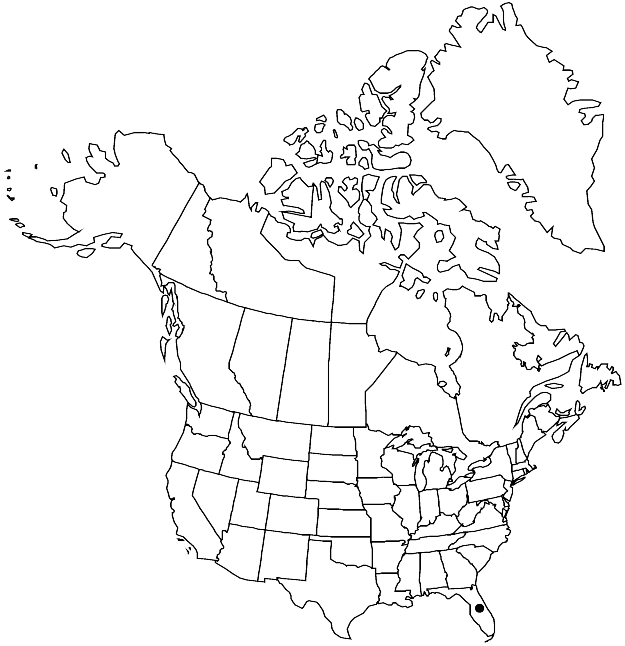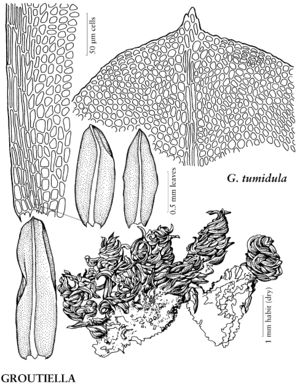Difference between revisions of "Groutiella tumidula"
Bryologist 82: 9. 1979.
FNA>Volume Importer |
imported>Volume Importer |
||
| (One intermediate revision by the same user not shown) | |||
| Line 54: | Line 54: | ||
|publication year=1979 | |publication year=1979 | ||
|special status=Illustrated | |special status=Illustrated | ||
| − | |source xml=https:// | + | |source xml=https://bitbucket.org/aafc-mbb/fna-data-curation/src/2e0870ddd59836b60bcf96646a41e87ea5a5943a/coarse_grained_fna_xml/V28/V28_50.xml |
|genus=Groutiella | |genus=Groutiella | ||
|species=Groutiella tumidula | |species=Groutiella tumidula | ||
Latest revision as of 21:36, 5 November 2020
Plants reddish brown. Branch leaves with distal leaves widest mid leaf or distally, oblong to oblong-lingulate, 1–1.8 mm; margins entire; apex rounded-obtuse, mucronate, not fragile; costa prominent, ending just below or in mucro; distal laminal cells rounded-hexagonal, 6–9 µm. Sexual condition pseudautoicous, dwarf male plants on leaves and tomentum. Seta 3–5 mm. Capsule oblong to oblong-ovate, 1–1.5 mm. Spores anisosporous, 15–22 µm.
Habitat: Rock, trees, horizontal branches 1-3 m high
Elevation: low elevations
Distribution

Fla., Mexico, West Indies, Central America, South America.
Discussion
Groutiella tumidula is distinguished by non-rugose leaves with a length-width ratio of less than 5:1, and by erect branches less than 5 mm high. The apex of the leaf is mucronate and never strongly apiculate, and the leaves are broadly longitudinally plicate when moist.
Selected References
None.
